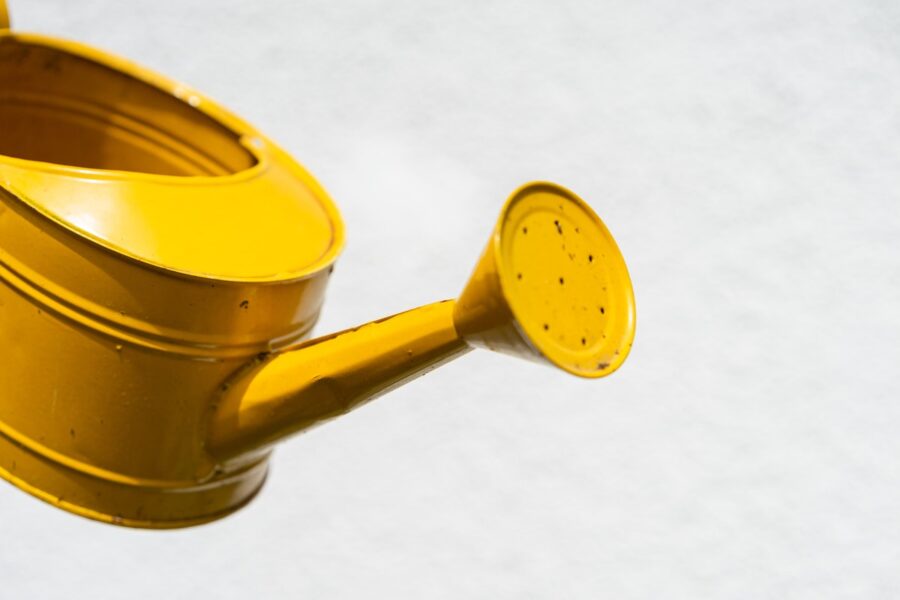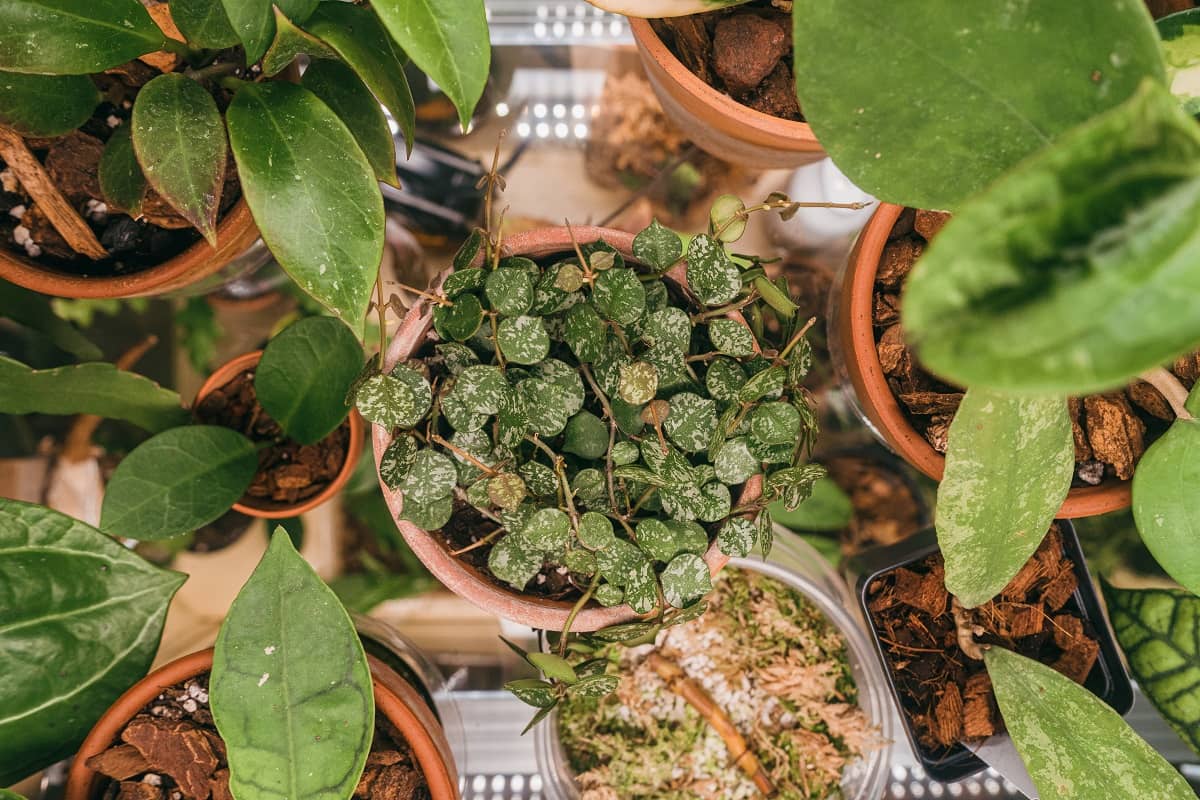What’s not to love about this plant? The trailing vines are beautiful and the leaves resemble Mickey Mouse’s ears, growing mostly in pairs and looking cute. If this is your first time owning a Hoya Serpens, then our guide is packed with everything you need to grow a stunning plant. Ready to be a Hoya master? Let’s dive in!
Table of Contents
The Benefits of Choosing Hoya Serpens
- Exotic appearance.
- Easy for beginners.
- Can live for years.
- Suitable for home propagation.
- Makes a lovely hanging basket plant.
- The plant is evergreen.
Origins and Appearance
Hoya Serpens has an interesting backstory. A lot of Hoya species hail from the Philippines but not this one. Hoya Serpens calls the Himalayas home. Today, it can also be found in Thailand, Malaysia, and Indonesia. The first western scientist to lay eyes on the plant was Sir Joseph Dalton Hooker, a respected scholar who lived during the 1800s.
Hoya Serpens has long trailing vines dotted with pairs of round or oval leaves. The latter can be fuzzy and they are always evergreen. Owning this species also gives you the opportunity to enjoy its unique pale green blooms. The flowers have a very soft scent but when your Hoya is in full bloom, the fragrance is sometimes more distinct.
Temperature and Humidity

If you are a new plant parent, one trick can save you a lot of heartache. Instead of learning through mistakes that cost you time and beloved plants, you can prepare an environment that holds three key ingredients for a happy Hoya – sunlight, temperature and humidity. Once you know what your plant loves, you can look forward to a great-looking plant that is also resistant to pests and illnesses.
Soft Natural Light is the Best
In nature, Hoya Serpens clings to the tops of tall trees. Far from being a parasitic plant, this Hoya uses its roots only as an anchor and to absorb rainwater and nutrients from organic matter that might be rotting around it. Light filters through the tree’s leaves, providing the Hoya with natural but soft light.
Place your Hoya in bright but indirect sunlight. The spot can even have dappled sunlight. But whatever you do, never expose this plant to direct sunshine. A short period is fine but very soon, the sunlight is going to burn the waxy leaves. In the worst-case scenario, when the plant is kept in direct heat, your Hoya cannot stay healthy. It might even perish.
Mild to Hot Temperatures
This houseplant is happiest when the temperature stays between 60 to 86 degrees Fahrenheit (15 to 30 degrees Celsius). Also, keep in mind that Hoya Serpens does not like sudden changes in temperature. In other words, a drafty room or window sill is not a good place for this plant.
High Humidity
Some Hoyas are not too finicky when it comes to humidity. But Serpens likes high humidity in the range of 60 to 100 percent. If you live in a humid area, then great, there should be no problem. But when the humidity drops too low and stays there for a long period of time, it will definitely endanger the health of the plant. There are ways to raise the humidity. Invest in a small humidifier to keep the levels steady or place your Hoya in an attractive terrarium.
Watering and Feeding

Watering Tips
For the best results, get your Hoya on a watering schedule as soon as possible. Mind you, this might take a few weeks. Overall, when kept in a warm environment, you can expect to water the soil 2 or 3 times a week. However, this depends on the dryness of the soil. While you are still determining your schedule, test the soil every day and when the top 2 inches feel dry, you can water the pot. Eventually, you will know when to offer your plant a drink without overwatering or underwatering.
Keep your schedule flexible during the hottest parts of summer. During this time houseplants generally need an extra watering or two.
Feeding Tips
Your Hoya loves getting a snack every now and again. Feed it a good, organic fertilizer once every two weeks (or even once a month). This will help the plant to produce new growth and plenty of flowers. Looking for a safe yet potent organic feed? Try fish emulsion. This liquid fertilizer can be diluted with water, a little bit at a time – so one bottle will last ages. It also never burns roots or leaves, no matter how strongly you mix it.
Soil and Repotting
As a plant that likes to cling to trees, Hoya Serpens has evolved to be somewhat rootbound. For this reason, you do not need to repot it frequently. Indeed, replanting Hoya Serpens too often actually causes the plant to stop flowering.
So, when can you switch pots? Give your Hoya a new container when roots start peeking from the topsoil or from one of the drainage holes. Repotting the Hoya roughly every two years is also a good idea. This gives you the chance to replenish the pot with fresh, nutrient-rich soil.
Choose a container that is larger than the old pot. Make sure that it has adequate drainage and that the potting mix is also well-draining. Hoya Serpens do not fare well in waterlogged earth or containers.
Get all the best tips on how to re-pot your house plants.
Pruning
When to Prune Hoya Serpens
Some Hoyas are noted for their slow growth but Serpens have a fairly rapid growth rate. When left unchecked, the vines can quickly grow out of control and create a houseplant that looks messy and unkempt. When you decide to give your Hoya a haircut, always use a clean and sharp pair of scissors. This lessens damage and transmission of diseases.
Trim your Hoya for the following reasons:
- To remove dead or brown stems and leaves.
- The plant has grown too large.
- To get rid of diseased parts.
Pests and Diseases
Hoya Serpens is normally a healthy houseplant. When its watering and temperature needs are met, the plant puts up a good resistance to illnesses. However, sometimes even the most well cared for Hoya can pick up unwelcome visitors and problems. Let’s look at the most common hiccups that you can expect.
Aphids – These pesky bugs are unavoidable. Even if they do not appear on your Hoya, they might appear on your other houseplants. They are easily recognizable with their bright green bodies and their tiny, compact appearance (almost grasshopper-like). Use a good organic insecticide.
Mealybugs – Signs include clusters of powdery clumps and white, dusty insects. Treat your hoya with organic insecticide as soon as you notice these critters. They can become quite destructive.
Stunted growth – The most common reasons are overwatering or underwatering. Check the soil to see whether the earth is too moist or dry and adjust the watering schedule over the next few weeks.
Sooty mold – Hoya Serpens produce a stickiness or sap. This sometimes triggers a mold outbreak. Aphids also produce a sticky dew that can also lead to sooty mold. Despite that the disease is caused by fungal growth, it’s not as destructive as other fungi. You can simply wipe the mold off and keep an eye on the situation.
FAQ
Yes, you can propagate this Hoya at home. It responds well to stem cuttings. Ensure that the soil and cutting tools are both sterilized. This reduces the chance that your cuttings will die from rot. Expect the cuttings to root in 3 to 6 weeks.
This variety of Hoya is a rapid grower. The most growth happens during summer and spring. Ultimately, Hoya Serpens can reach a length of 8 to10 feet (2.4 to 3.0 meters).
Several factors can prevent your Hoya from blooming. Some of the most common include unnecessary repotting, insufficient sunlight or incorrect watering. Hoyas that bloom frequently are slightly rootbound and receive indirect or dappled sunlight and correct watering.
Hoya Serpens only flower when they are mature. When grown from cuttings, you can expect your Hoya to bloom for the first time 5 or 6 years later.

